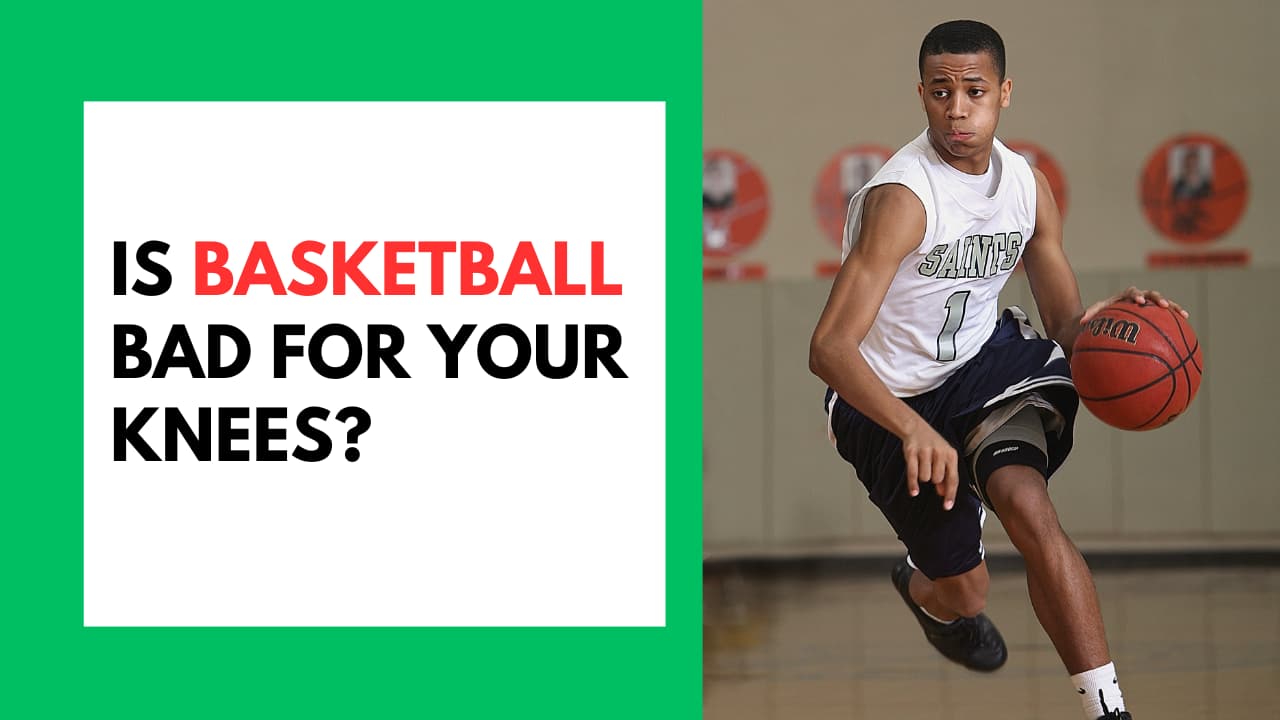Fast breaks racing down the court, sneakers squeaking with each move, and the excitement of a last-second shot make basketball full of energy, speed, and thrill. Whether it’s being played on local courts at sunset or in big arenas packed with cheering fans, this game has won the hearts of millions around the world. However, behind every big dunk or smooth crossover, there’s a possibility of knee pain or injury. If you play on weekends, are part of a school team, or have just seen someone walk off the court with a limp, you might have wondered if basketball is bad for your knees. Let’s find out.
Expert in This Article
Dr. Brown is an experienced orthopedic surgeon focused on advanced shoulder and knee care, offering both surgical and non-surgical solutions.
How Basketball Stresses the Knees?
According to Dr. Barrett S. Brown, MD. “Basketball requires powerful bursts of movement, fast reactions, and constant motion, but these same things put much stress on your knees.” Here’s how the game can challenge and sometimes strain the main joints in your lower body:
· High-Impact Movements
Jumping for a rebound or a dunk loads the knees with much force from the ground. Landing after these jumps, especially if done with poor form or repeated too often, can put much pressure on the patellar tendon and other structures around the knee. Sudden stops and starts, like speeding up or slowing down quickly, also send strong forces through the knees. These quick changes test your knee’s ability to stay stable and in control.
· Rapid Changes of Direction
Basketball often involves quick cuts, pivots, and side-to-side shuffles. These fast changes in direction stress the ligaments in the knee, especially the ACL. When these movements happen quickly or without warning, they increase the risk of injury. Research shows that such motions can force the knee inward, a movement called valgus loading, which is a common factor in ACL injuries, particularly in female athletes.
· Biomechanical Risk Factors
Players who have knee problems often show higher landing forces when jumping and tend to land with their legs straighter, meaning their knees don’t bend enough to absorb the shock. A limited range of motion, or not bending the knees deeply when landing, makes the joints take on more of the impact, which raises the chance of injury. Fatigue and surprise movements during the game, like quickly reacting to an opponent, also reduce knee control and lead to higher stress on the joints.
· Muscle Strength Imbalances
Weakness in the muscles that bend and straighten the knee, known as the flexors and extensors, can also raise the risk of injury. This is especially true for female players. When these muscles aren’t strong enough, the knee doesn’t get the support it needs, so it ends up taking more force with each jump, run, or cut.
· Hard Playing Surfaces
Basketball is usually played on hard indoor courts. These surfaces don’t absorb much shock, so more of that impact gets passed up into the knees. Over time, playing on such hard floors can wear down the joints and lead to pain or long-term knee issues.
You May Also Like: How Long Does the Pain Last for a Smashed Finger?
Common Knee Injuries in Basketball
Basketball is a demanding sport, which makes certain knee injuries especially common among basketball players. Here are the most frequent knee injuries in the sport, along with how often they happen and how they affect players.
· Anterior Cruciate Ligament (ACL) Tears
ACL injuries are one of the most serious knee problems for basketball players, making up about 24% of all structural knee injuries in the NBA. They usually happen during fast stops, sudden direction changes, or awkward landings, especially when the knee twists inward while the foot stays planted. ACL tears are often severe and typically require surgery followed by a long period of rehab before returning to play.
· Medial Collateral Ligament (MCL) Sprains
MCL injuries are quite common in competitive basketball. They usually happen when there’s a direct hit to the outside of the knee, forcing it to bend inward. However, they can also occur without contact, especially when a player cuts or lands with their knee turning inward. These sprains can range from mild to severe, depending on how much the ligament is stretched or torn.
· Meniscus Tears
Meniscal tears are one of the most common serious knee injuries among professional basketball players. These injuries often happen when a player pivots, cuts, or twists the knee suddenly during play. A torn meniscus can cause pain, swelling, and stiffness, and may need surgery to fix. “If a meniscus tear is left untreated, it can lead to long-term knee issues and even increase the risk of arthritis later on.” Says Dr. Brown.
· Patellar Tendinopathy (Jumper’s Knee)
Jumper’s knee is one of the most common overuse injuries in basketball, especially for players who jump frequently. It’s caused by repeated stress on the tendon that connects the kneecap (patella) to the shinbone. Over time, this can lead to inflammation or degeneration of the tendon. Players with jumper’s knee often feel pain and tenderness just below the kneecap. If not treated properly, it can get worse and possibly lead to a full tendon tear.
· Patellar Injuries (Including Dislocation)
Injuries involving the patella (kneecap), such as bruises, fractures, or dislocations, affect many basketball players. These injuries can result from landing hard on the knee or taking a direct hit to the front of it. Dislocations are more likely in players with naturally loose ligaments or from awkward twisting motions. These injuries can be painful and may take time to fully heal.
· General Knee Sprains and Strains
Sprains involve the stretching or partial tearing of knee ligaments other than the ACL or MCL, often due to sudden impacts or unnatural movements. Strains, on the other hand, involve overstretching or injuring the muscles and tendons that support the knee. These injuries usually happen during high-intensity activity and can cause pain, swelling, and limited movement, requiring rest and proper care to recover fully.
Ways to Protect Your Knees During Basketball
Basketball puts a lot of pressure on your knees with all the jumping, quick turns, and hard landings. But with the right exercises, warm-ups, gear, and healthy habits, you can protect your knees and keep playing strong. Here’s how you can reduce your risk of injury:
· Build Strength and Mobility
Strong muscles and flexible joints support your knees and reduce strain. Focus on strengthening your glutes, quads, and core. Glutes help keep your hips stable and take pressure off your knees. Try standing by fire hydrants with a resistance band. Strong quads absorb shock when landing, and the Spanish squat is a great way to build them without stressing your kneecaps.
A strong core helps you stay balanced during quick moves and awkward landings. It’s also important to stay flexible, stretch your quads, hamstrings, calves, hips, and IT bands often. Mix static stretches with dynamic ones like leg swings or walking lunges. Also, work on ankle mobility so your knees don’t have to do all the work when you move.
· Warm Up, Cool Down, and Rest
Getting your body ready before you play and helping it recover after can protect your knees from injury. Start your session with light jogging, dynamic stretching, and basketball-specific drills to warm up your muscles and loosen your joints. After playing, do a cool down with light jogging and longer static stretches to reduce tightness and keep your knees healthy. “Give your body time to rest between games or workouts; overtraining can wear out your knees.” Advises Dr. Brown. If you feel pain or fatigue, try massage, foam rolling, or wearing compression sleeves to help your muscles recover.
· Use Proper Equipment
Wearing the right gear makes a big difference in protecting your knees. Choose basketball shoes that fit well, support your ankles, and provide good grip. Replace your shoes when they start to wear out. If you have had a knee injury before, using knee sleeves or pads can add extra support and cushioning. Make sure the court you play on is clean, dry, and well-kept. Playing on a dirty or damaged surface increases your chances of slipping or landing awkwardly.
· Master Technique
Good technique can help prevent many knee injuries. When jumping and landing, keep your knees bent and make sure they stay in line with your toes. This strategy helps absorb shock and reduces strain on your ligaments. During fast cuts or changes in direction, bend your knees and try to slow down smoothly instead of stopping suddenly. Avoid sharp or stiff movements. Also, play smart by following the rules and being aware of other players to avoid unnecessary collisions or risky actions.
· Support Your Whole Body
Taking care of your overall health helps your knees, too. Maintaining a healthy body weight reduces the stress on your joints with every step or jump. Eating a diet with anti-inflammatory foods like salmon, leafy greens, and nuts helps your body recover and keeps your cartilage strong. Also, stay well hydrated before, during, and after playing. Water helps your muscles and joints work better and recover faster.
Wrapping Up
Basketball is not bad for your knees, but it can lead to knee injuries. However, you can lower the risk a lot by doing the right things mentioned earlier. For most healthy people, the benefits of playing basketball surpass the risks, as long as they play smart and take care of themselves. “If you feel knee pain during or before the game, pause and consult a healthcare provider as soon as possible.” States Dr. Brown.






